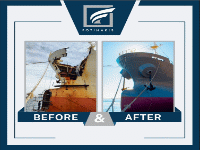Emerging Freight Prospects at Baltimore and Sacramento Ports
The Port of Baltimore maintained its leading position last year by managing an notable 848,628 tons of roll-on/roll-off agricultural and construction equipment. (Nathan Howard/Bloomberg)
OXON HILL, Md. — During the recent SelectUSA Investment Summit from May 11-14, economic advancement leaders from both coasts highlighted trucking and multimodal logistics opportunities surrounding the ports of Baltimore and Sacramento.
Lakey Boyd, the Greater Baltimore Commitee’s chief economic officer, emphasized how quickly the Port of Baltimore bounced back after last year’s Francis Scott Key Bridge disaster. “We’re showcasing our resilience,” Boyd shared with Transport Topics. “Our ability to adapt is key as we move forward.”
She mentioned that forecasts indicate a rapid return to full operations at the port—potentially within just four months—underscoring how vital freight distribution is for future growth in both the port and surrounding areas.
The Port of Baltimore not only led in handling agricultural machinery but also topped charts for imported forest products and gypsum while ranking second for processing nearly 750,000 cars and light trucks along with salt cargoes and exported coal.
This year, Maryland Governor Wes Moore celebrated the port’s achievements as a crucial economic driver for Maryland. “These figures reflect our hard work at the port despite initial challenges,” he remarked. “We owe much to our dedicated workers whose commitment has brought us here.” He also promised continued infrastructure investments aimed at boosting business growth.
Mark Anthony Thomas, GBC president and CEO noted that following last year’s bridge closure; there was a renewed global focus on what ports contribute economically.
This year has seen shifts due to tariff threats impacting foreign trade zones (FTZ) around the port area where goods can be stored without incurring U.S. tariffs until they are released into commerce. p >
Boyd pointed out that international manufacturers are opting to stockpile their agricultural machinery rather then pay tariffs upfront before entering American markets. p >
The ongoing expansion projects at Port of Baltimore aim to enhance its capacity for future cargo despite these tariff challenges. “There’s plenty of potential here,” Boyd stated enthusiastically about attracting companies interested in utilizing FTZ benefits. p >
Sacramento’s Barry Broome echoed similar sentiments while seeking freight investments during discussions about logistics opportunities outside major urban centers like San Francisco where costs can be prohibitive compared to Sacramento’s competitive pricing against cities like Austin or Denver. p >
“Reno poses important competition,” Broome acknowledged while highlighting Sacramento’s advantages such as direct truck routes on I-5 alongside coast-to-coast access via I-80 & U.S Highway 50 complemented by rail services through BNSF & Union Pacific plus bulk cargo capabilities at West Sacramento’s FTZ.” p >
for more details listen below or check out additional details here: p >
Content Original Link:
" target="_blank">




















































